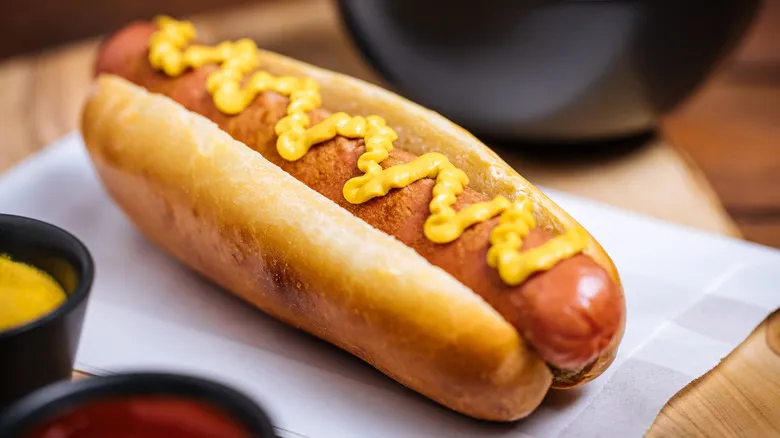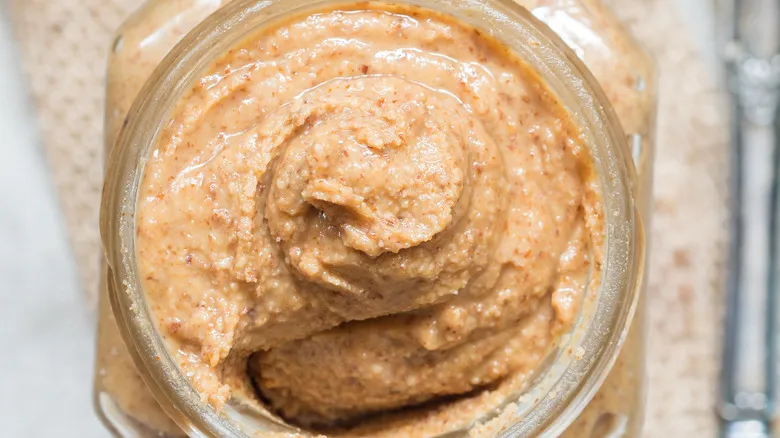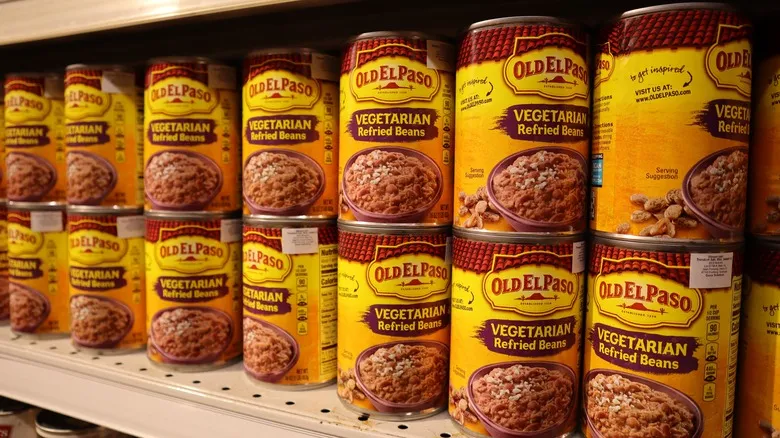New York hot dog
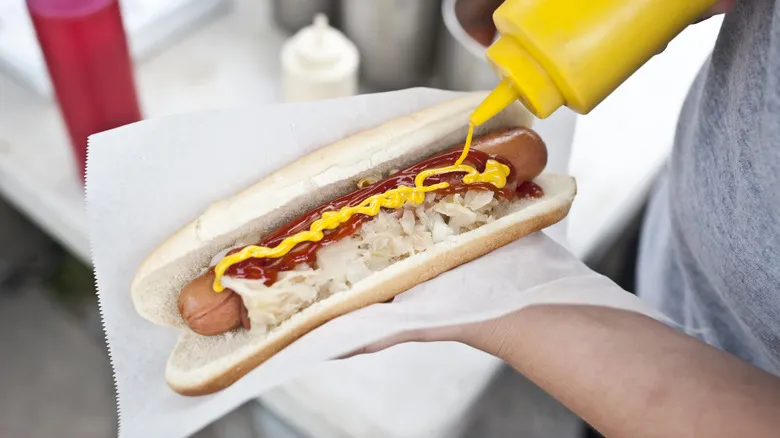
If you're indulging in a hot dog in New York City, you'll want a bun that matches its size. A steamed hot dog bun is ideal; just ensure it's robust and long enough to accommodate the hot dog, onions, and mustard that define a classic NYC hot dog. The bun should be soft but not overshadow the hot dog itself, which is the true highlight of this New York-style treat. Nathan's Famous and Sabrett's are two iconic brands that originated in New York and are now available in supermarkets, allowing you to enjoy delicious hot dogs without the hassle of city traffic. Besides holding the hot dog and toppings, the bun doesn't need to do much more.
You can find genuine NYC hot dogs at street vendors, particularly from the Sabrett carts with their recognizable blue and yellow umbrellas. At these carts, hot dogs are typically served with onions and mustard, though some restaurants and upscale vendors may add their own twist with gourmet deli mustard or pickled onion relish. Nathan's Famous, a Brooklyn institution since 1916, crafts their own incredibly juicy franks and serves them on thin buns. Sabrett's is celebrated for the natural casing used in their franks, which provides a unique texture with each bite, often referred to as "the snap."
Chicago-style hot dog
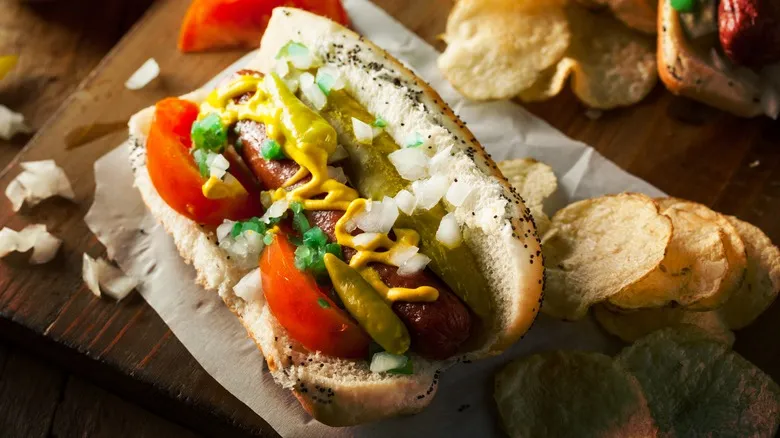
Classic Chicago-style hot dogs are served on poppyseed buns. These hot dogs have specific requirements for their buns, as they not only hold the sausage but also contribute to the overall flavor and texture. The robust taste of the poppyseed bun complements the extensive array of toppings, which typically includes raw onions, mustard, relish, peppers, tomatoes, and pickles.
The toppings transform a simple 100% beef hot dog into a satisfying meal that can sustain a customer throughout a busy day. Chicago-style hot dogs gained popularity during the Great Depression when affordable and filling food was essential. In the 1930s, they were sold for just five cents and were referred to as "depression sandwiches." A whole pickle spear is often placed alongside the hot dog within the bun.
There is a specific order for adding condiments, and the best vendors strictly follow it. Mustard and relish are applied first to coat the inside of the bun, while ketchup is not permitted on a Chicago-style dog. Onions, tomatoes, pickles, and peppers are added next, and the hot dog is finished off with a sprinkle of celery salt.
Kansas City hot dog
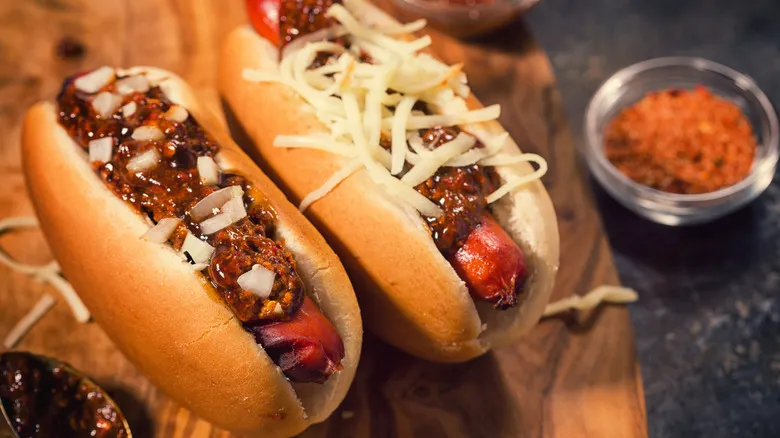
Seek out a large or oversized bun to accommodate Kansas City-style hot dogs, which are frequently garnished with brisket, pulled pork, or barbecue burnt ends—a local delicacy. In a city celebrated for its barbecue, both residents and visitors generously apply this sweet and spicy sauce to everything from hot dogs to burgers. Kansas City barbecue boasts a sweet and smoky profile, with a tomato base that enhances the flavor of the hot dogs when used as a condiment or topping, necessitating a soft bun that can absorb extra sauce. The burnt ends add a delightful crunch and char, making them an excellent complement to a juicy hot dog. When you combine barbecue and burnt ends on a fluffy bun, you create a burst of flavor and texture, with the hot dog serving as the foundation. The bun should be sturdy enough to support a hot dog and toppings that often overflow from the top and sides.
Some Kansas City residents also enjoy topping their hot dogs with sauerkraut, paying homage to the area's German heritage. These hot dogs are typically served on sesame seed-laden buns and may even be topped with Swiss cheese alongside the kraut. However, neither style has the same level of devoted fans among Kansas City locals as the hot dogs found in cities like New York or Chicago, both of which can also be found in KC.
New England hot dogs
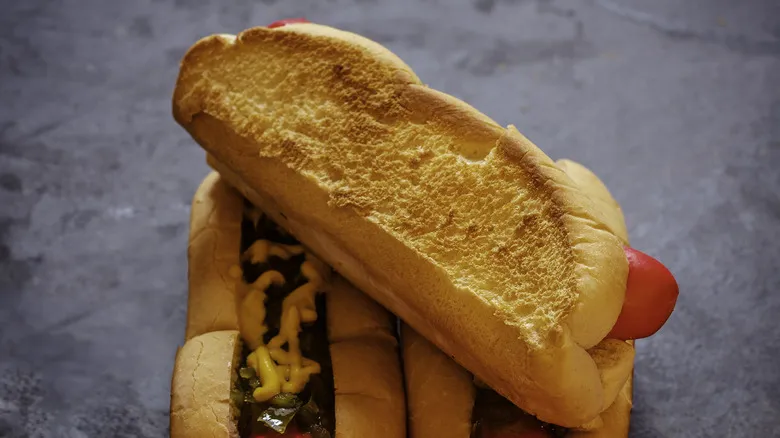
New England-style hot dogs emphasize the bun more than the sausage itself. These buns are uniquely cut across the top, forming a sturdy square base that securely holds the hot dog and its toppings. Known as split top rolls, their design allows for generous amounts of condiments without the risk of tipping over. For added flavor, consider toasting the outside of the bun with butter, a popular technique also used for the region's famous lobster rolls.
Originally created in the 1960s to accommodate fried clams, these buns were designed to prevent tipping when filled. The split top bun quickly gained popularity and has only improved over the years. While they are often labeled as hot dog rolls, these versatile buns can be used for a variety of sandwiches, especially those packed with delicious fillings. For an authentic New England experience, grill a red snapper hot dog—a Maine specialty—and serve it in a toasted split top bun.
Coney Island hot dog

Hot dogs originated as a convenient street food on Coney Island, providing beachgoers with a quick and easy snack; the bun played a crucial role in their portability. As early as the mid-1860s, visitors could grab a hot dog nestled in a soft bun and stroll along the sandy shore while enjoying their meal. German immigrant Charles Feltman is credited with creating the first Coney Island hot dog. At the height of its popularity, Feltman's Ocean Pavilion sold up to 40,000 hot dogs daily. Eventually, one of Feltman's employees set out on his own, leading to the creation of Nathan's Famous Hot Dogs. These franks are even recognized among the best hot dogs available in grocery stores, though they lack the refreshing ocean breeze.
Today, Coney Island-style hot dogs are still served at the same venues (and many more) where they first gained popularity, typically on traditional buns with mustard. Nathan's Famous even hosts a hot dog eating contest at Coney Island. The toppings are generally quite simple, allowing you to customize your dog with ketchup, mustard, or relish. However, the buns remain essential in this beach-loving community, as they continue to fulfill their original purpose of enabling satisfied customers to enjoy a delicious hot dog with nothing more than their appetite.
Michigan Coney hot dog
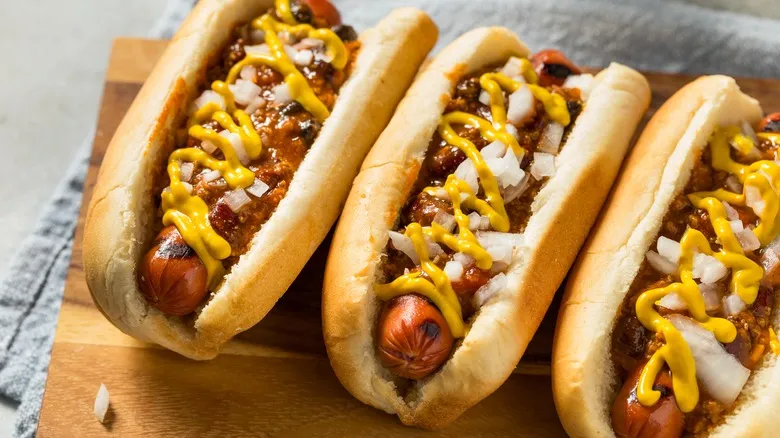
As you travel west from New York, the term "Coney dog" takes on a different significance. In Michigan, a Coney dog refers to a beef hot dog garnished with chili, white onions, and mustard, typically served on a steamed bun. The hot dog should be made from juicy beef, complementing the soft roll perfectly. For an authentic Coney dog experience, it's essential that the chili is bean-free. If possible, opt for beef franks sourced from Michigan.
The origin of the name remains unclear, but the prevailing theory suggests that Greek immigrants who passed through New York's Coney Island were inspired to use the name when they opened their own hot dog shops. The two most famous establishments in Detroit, American Coney and Lafayette Coney, were founded by two brothers around 1917 and 1924, respectively, although some records indicate their origins as late as 1923 and 1936. The rivalry and intrigue between these neighboring establishments are only surpassed by the quality of their hot dogs. They continue to operate in the same locations, serving up their delicious Coney dogs to this day.
Cincinnati Coney hot dog
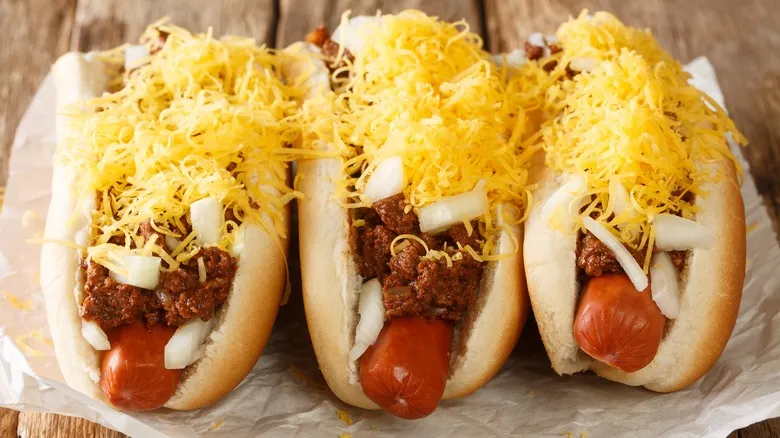
Another variation of the hot dog inspired by Coney Island is the Cincinnati Coney. This delicious treat is topped with Cincinnati-style chili, onions, and cheese, all nestled in a subtly sweet brioche bun. A potato roll is also a great option due to its mild sweetness and incredibly soft, pillowy texture. These hot dogs are generously piled with toppings, so it's important to choose a bun that is large enough to accommodate not just the hot dog but also the extra toppings. The slight sweetness of the bun plays a crucial role in enhancing the overall flavor.
Cincinnati dogs feature a bean-free chili that boasts a sweet taste, thanks to spices like cinnamon and allspice. This chili has a finer consistency compared to other varieties, making the soft bun even more essential, as it will absorb all the flavorful chili juices. The sweet brioche or potato buns complement the mildly sweet chili perfectly. Traditionally, these dogs are served with mustard and onions, but a hearty sprinkle of shredded cheddar cheese elevates them to a whole new level.
Seattle-style hot dogs
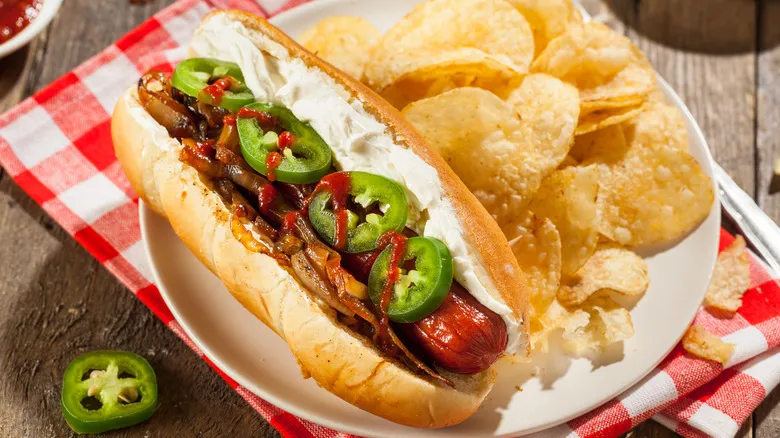
Seattle-style hot dogs are typically served in a unique bun made from bagel dough. This style emerged around 1989, with many attributing its creation to bagel cart vendor Hadley Long. The buns resemble a bialy since they utilize bagel dough, but they are not boiled before baking. Instead, Long opted for buns that went straight into the oven, as he needed a quick solution to satisfy the hot dog enthusiasts visiting his cart. Once the buns were baked, he filled them with a hot dog, generously spread cream cheese on top, and added some onions.
If you can't find a bagel-dough bun, seek out a super soft alternative that pairs well with the hot dog, topped with cream cheese, grilled onions, and even jalapeños. These hot dogs are not overloaded with toppings, although most hot dog vendors will offer the usual condiments like ketchup, relish, onions, and peppers. The bun and cream cheese truly shine in the Seattle hot dog experience, distinguishing it from other styles.
Reuben hot dog
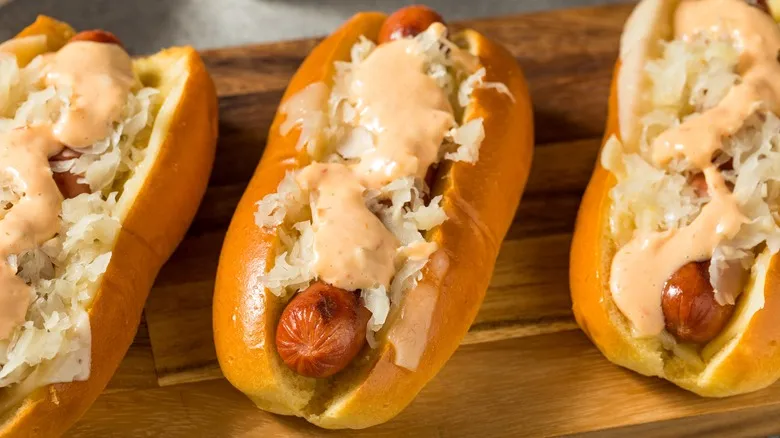
You can discover these Reuben-inspired hot dogs in Kansas City, but they also appear on menus across the nation. Serve them in French bread rolls that are split down the center, and top them with pastrami, sauerkraut, Swiss cheese, and Thousand Island dressing, just like a traditional Reuben. Since they are loaded with toppings, ensure the bun is sturdy enough to keep everything together. A split-top bun is ideal because its square base provides excellent support for the hot dog while you pile on the kraut.
The Reuben sandwich has its origins in the 1920s, with two leading theories suggesting it was created in either Nebraska or New York. However, you can find pastrami-filled sandwiches and similar flavors in various regions as well. The classic Reuben flavors consist of pastrami, sauerkraut, and Swiss cheese, but you can enjoy any of these ingredients on their own for a tasty hot dog experience.
Dodger dogs

These enormous hot dogs are a beloved fixture at Dodger Stadium in Los Angeles, where they earned their name. The buns have a classic flavor and texture but are noticeably a few inches shorter than the hot dogs themselves. Dodger dogs are typically topped with traditional condiments like ketchup, mustard, and relish, which can be found at stands near the hot dog vendors throughout the ballpark. However, it’s the bun-to-hot dog ratio that truly sets these dogs apart.
Measuring an impressive 10 inches in length, Dodger dogs are significantly larger than the average hot dog, which usually ranges from 4 to 6 inches. What makes a Dodger dog distinctive is that both ends extend beyond the bun, meaning the initial bites are likely to be all sausage and no bun. They pair perfectly with a bag of peanuts, also available at Dodger Stadium, making for an ideal snack while enjoying a day at the ballpark.
Reindeer dogs
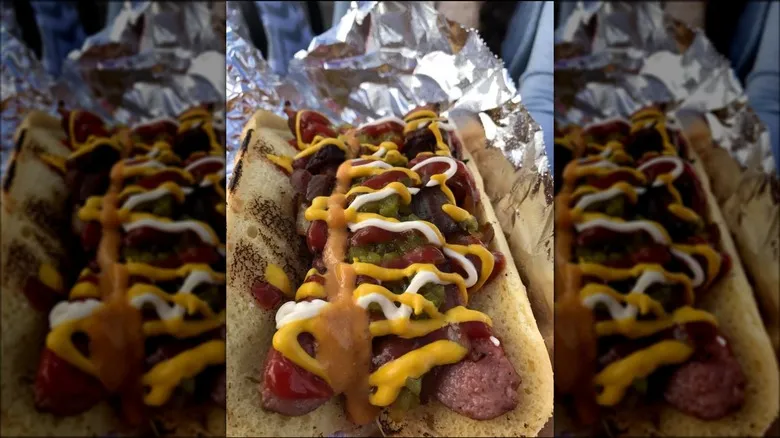
Despite what their name might imply, these hot dogs, which are a favorite in Alaska, are typically made from a mix of caribou, pork, and beef. This combination of meats is more readily available in Alaska, and you can even purchase them pre-made as Alaskan hot dogs. Occasionally, these hot dogs are served with Coca-Cola caramelized onions, adding a delightful sweetness. A steamed bun pairs perfectly with reindeer dogs and is easily found in most grocery stores. Alaskan reindeer dogs focus on the hot dog itself, so the bun should be sturdy yet simple, ensuring the attention remains on the flavorful meat.
They can be topped with various condiments, including those sweet onions, relish, ketchup, mustard, and even cream cheese, all served on a steamed bun. However, the hot dog is the star of the show, and aside from the onions, the toppings can vary greatly depending on individual tastes. Due to their popularity, reindeer dogs have also made their way to other West Coast states, where each area adds its unique twist to the toppings. In Washington, for instance, cream cheese is a common addition, as it is a hallmark of the Seattle-style hot dog. While a steamed bun is still a classic choice, you can also find them served on bagel dough buns in Seattle.
Sonoran hot dog
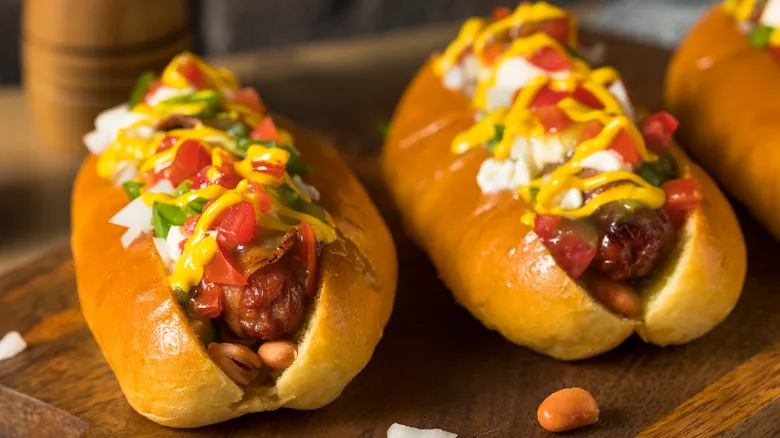
Named after the Sonoran desert region, these hot dogs are a favorite on menus throughout Arizona and neighboring states, though their roots can be traced back to Mexico. Look for a slightly sweet bun that complements the bacon-wrapped hot dog, crema, salsa, and pinto beans. A Sonoran dog is celebrated for its rich flavors, from the sweet bread to the savory hot dog and salty bacon, making the bun an essential component. With creamy beans and crema, plus salsa that adds just the right kick, you have a satisfying meal all in one delicious handheld treat. These hot dogs come piled high with toppings, so the bun must be large enough to hold everything together.
If you can’t find the perfect bun, you can create your own Sonoran-style version. The key is to use a flour, milk, and yeast mixture, known as a tangzhong starter, which helps achieve an incredibly soft texture as the bread bakes. This method also contributes to the slightly sweet flavor that pairs beautifully with a Sonoran dog.
Brats and sausages
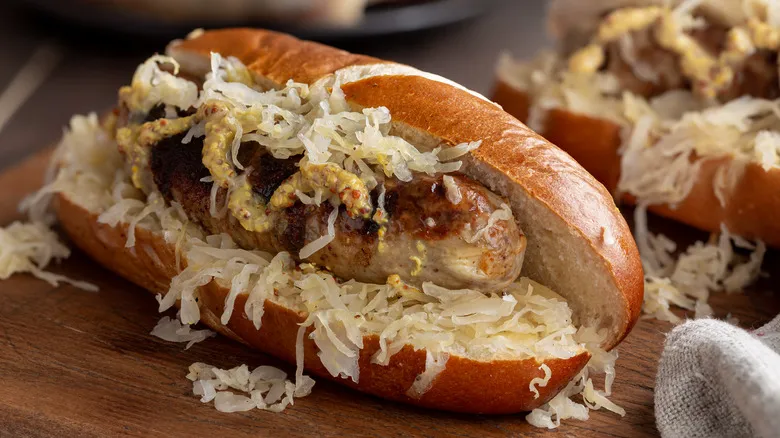
Hot dog varieties can be defined by their toppings, sausages, or buns, but bratwurst and sausages also have specific criteria for pairing the ideal bun with the meat. There are distinct flavor differences between bratwurst and hot dogs. Bratwursts boast a bolder taste, enhanced by unique spices like nutmeg or caraway seeds, and typically consist of a single type of meat. In contrast, hot dogs have a milder flavor profile due to a blend of various meats and more common spices. This often necessitates a sturdier bun, so opt for a large or jumbo option, or one specifically designed for brats.
Avoid placing a juicy brat or sausage on a standard hot dog bun. Instead, elevate your experience with a hoagie roll or pretzel bun that can support the larger frank and its robust flavors. You can still use many of the same toppings, including classic choices like ketchup, mustard, and relish. Additionally, substituting a brat or sausage for a hot dog in regional specialties is a fantastic idea. Just be sure to upgrade your bun to accommodate the deliciousness of a brat or sausage.
Recommended
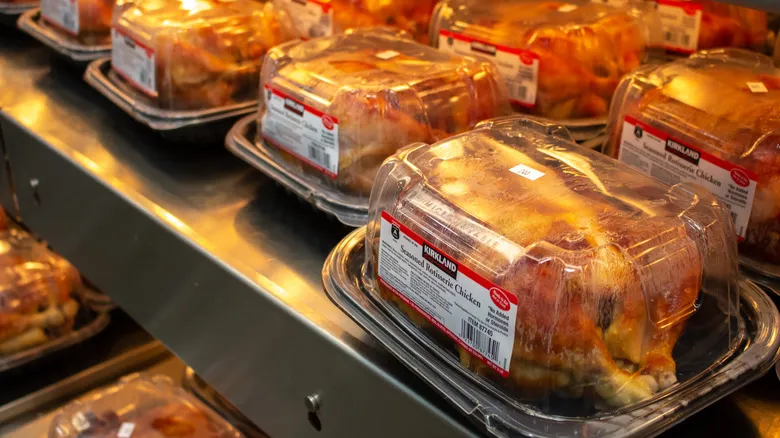
Where Does Costco Source The Meat For Its Rotisserie Chickens?

Why Costco's Maple Syrup Bottle Is Causing A Fuss Among Customers

The Fast Food Staple Costco Food Courts Only Sell Outside The US
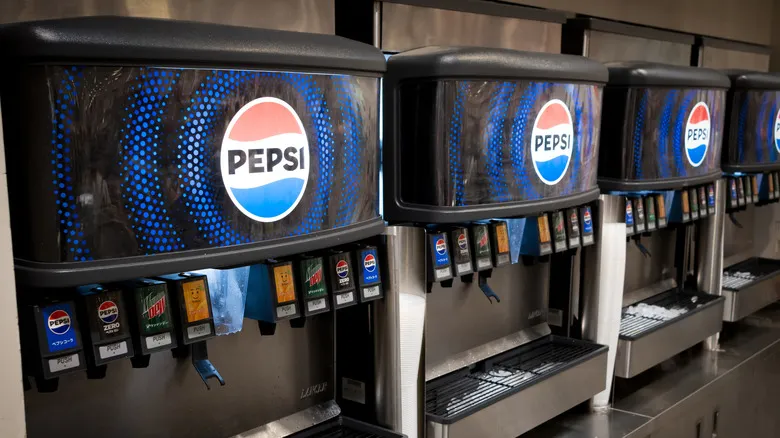
Costco's Food Court Soda Fountain Could Be Receiving A Major Makeover
Next up

